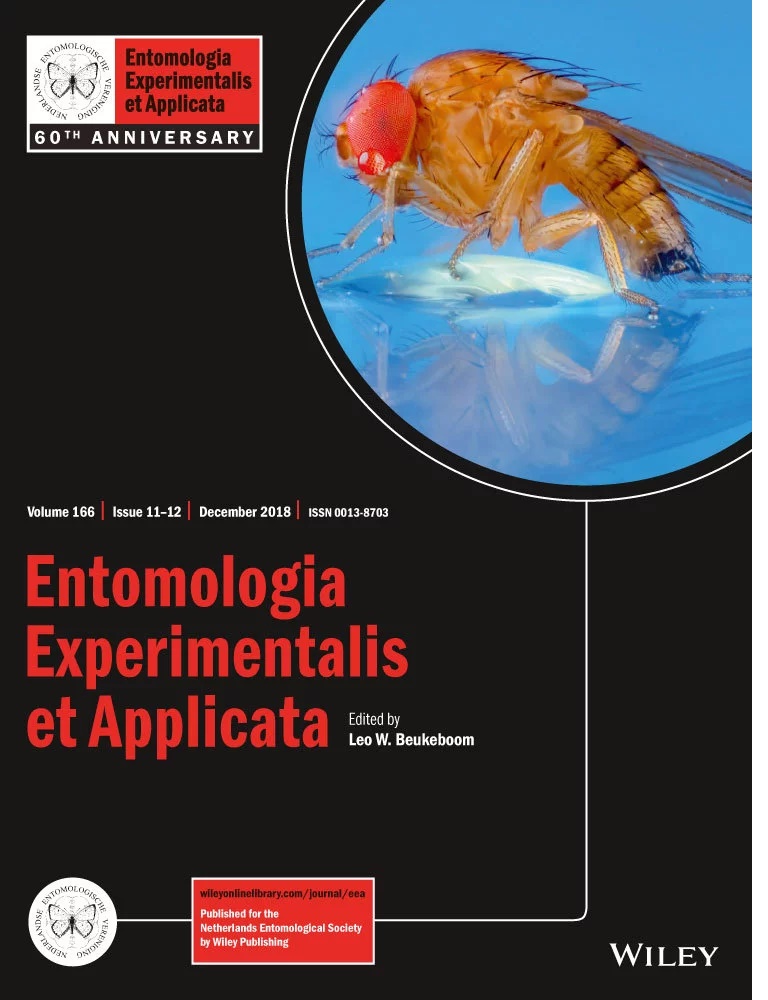Ver ítem
- xmlui.general.dspace_homeCentros Regionales y EEAsCentro Regional Patagonia NorteEEA BarilocheArtículos científicosxmlui.ArtifactBrowser.ItemViewer.trail
- Inicio
- Centros Regionales y EEAs
- Centro Regional Patagonia Norte
- EEA Bariloche
- Artículos científicos
- Ver ítem
Host-related volatile cues used by a parasitoid wasp during foraging for its woodboring host
Resumen
Parasitoids relymainly on infochemicals to search for their herbivore hosts to oviposit on. Megarhyssa nortoni (Cresson) (Hymenoptera: Ichneumonidae) is a parasitoid of siricid wasp larvae which are concealed inside tree stems of several coniferous tree species. This parasitoid is used as a biological control agent against the global pine pest Sirex noctilio Fabricius (Hymenoptera: Siricidae), which engages in an obligate nutritional symbiosis with the
[ver mas...]
Parasitoids relymainly on infochemicals to search for their herbivore hosts to oviposit on. Megarhyssa nortoni (Cresson) (Hymenoptera: Ichneumonidae) is a parasitoid of siricid wasp larvae which are concealed inside tree stems of several coniferous tree species. This parasitoid is used as a biological control agent against the global pine pest Sirex noctilio Fabricius (Hymenoptera: Siricidae), which engages in an obligate nutritional symbiosis with the fungus Amylostereum areolatum (Chaillet ex Fr.) Boidin (Russulales). We explore the chemical cues that could be used by M. nortoni females while foraging for hosts on the two pine species most commonly planted in commercial forests in Patagonia, Argentina, Pinus contorta Douglas ex Loudon var. latifolia Engelm. ex SWatson and Pinus ponderosa Douglas ex C Lawson (Pinaceae). Behavioural assays were conducted in an olfactometer
and the following odour sources were tested in pairwise combinations: (1) P. contorta, (2) P. ponderosa, (3) P. contorta with host fungal symbiont, (4) P. ponderosa with host fungal symbiont, and (5) air (control). Megarhyssa nortoni females discriminated the odours of infested wood (host fungal symbiont-pine complex) from those of healthy trees, irrespective of the pine species. Additionally,
when offered both pine species infested with the fungal symbiont, the parasitoids displayed a bias towards P. contorta. Even though the identity of the compounds responsible for the behavioural bias towards the symbiont was not established at this stage, our findings emphasize the relevance of chemical information derived from the fungal symbiont-pine complex during parasitoids that forage for woodboring insect hosts.
[Cerrar]

Autor
Fuente
Entomologia, Experimentalis et Applicata 166 (11-12) 907-913 (December 2018)
Fecha
2018-12
Editorial
Wiley
ISSN
1570-7458
Formato
pdf
Tipo de documento
artículo
Palabras Claves
Derechos de acceso
Restringido
 Excepto donde se diga explicitamente, este item se publica bajo la siguiente descripción: Creative Commons Attribution-NonCommercial-ShareAlike 2.5 Unported (CC BY-NC-SA 2.5)
Excepto donde se diga explicitamente, este item se publica bajo la siguiente descripción: Creative Commons Attribution-NonCommercial-ShareAlike 2.5 Unported (CC BY-NC-SA 2.5)

